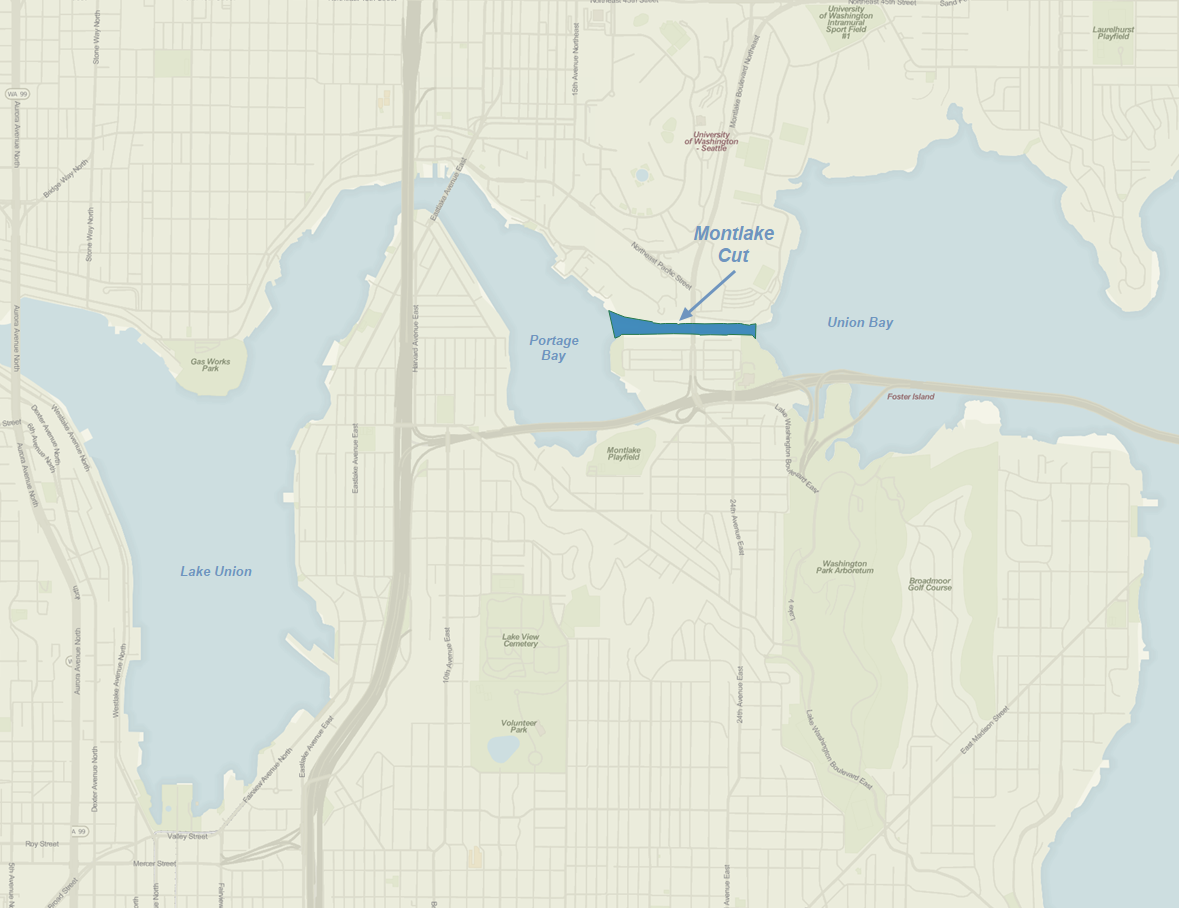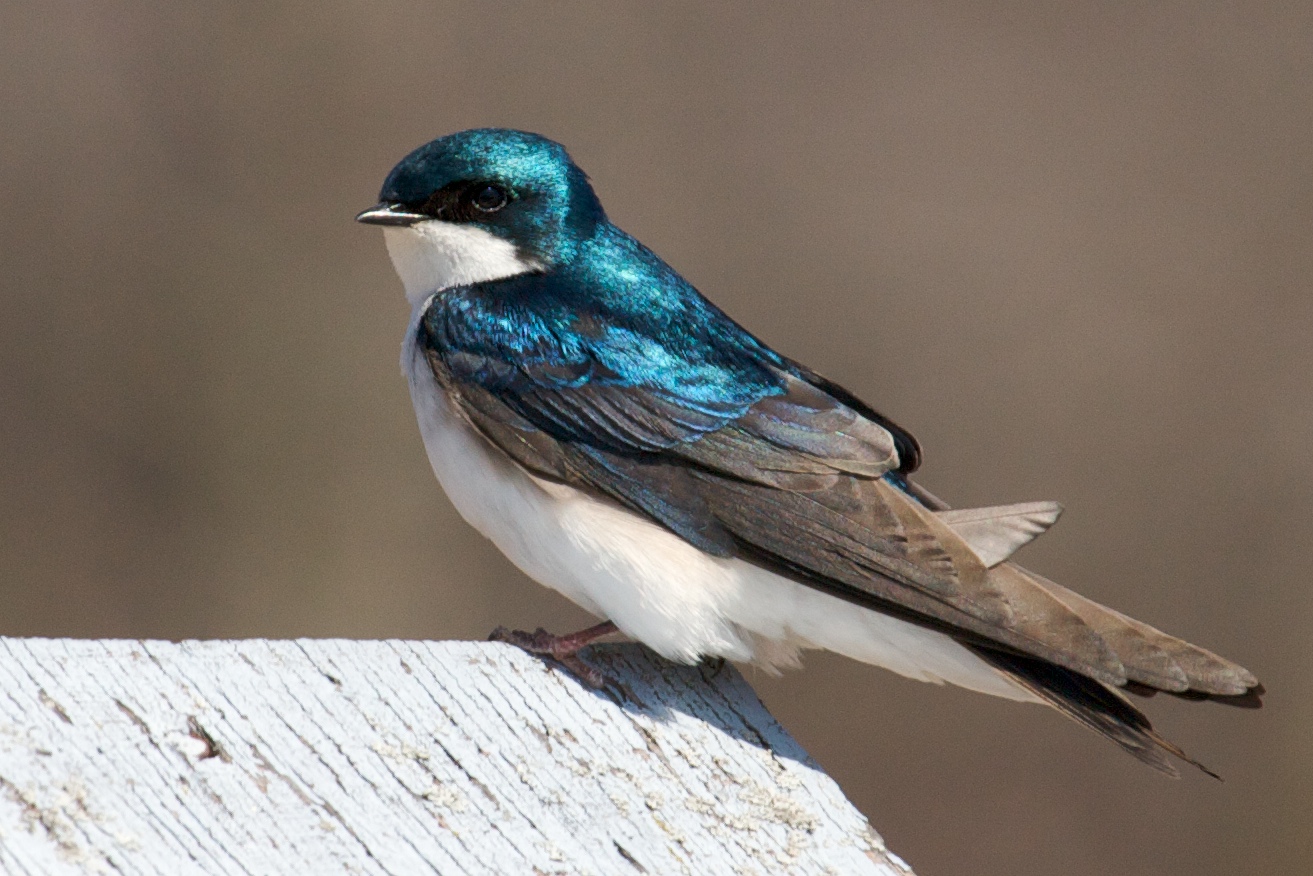|
Union Bay Natural Area
The Union Bay Natural Area (UBNA) in Seattle, Washington, also known as Union Bay Marsh, is the restored remainder of the filled former Union Bay and Union Bay Marsh. It is located at the east end of the main University of Washington campus, south of NE 45th Street and west of Laurelhurst. Ravenna Creek is connected to University Slough (Drainage Canal), thence to Union Bay, and Lake Washington. Drainage Canal is one of three or four areas of open water connected with Lake Washington around Union Bay Marsh. The canal extends from NE 45th Street, between the driving range and IMA Sports Field 1, south to the bay, ending southeast of the Husky Ballpark baseball grandstand (northeast of the IMA Building). The Drainage Canal that carries Ravenna Creek past UBNA to Union Bay is locally sometimes called University Slough. The little grasslands, modest ponds, and lake shoreline of the UBNA is a sanctuary for birds (including double-crested cormorants, great blue herons, and eagles) ... [...More Info...] [...Related Items...] OR: [Wikipedia] [Google] [Baidu] |
Seattle
Seattle ( ) is a seaport city on the West Coast of the United States. It is the seat of King County, Washington. With a 2020 population of 737,015, it is the largest city in both the state of Washington and the Pacific Northwest region of North America. The Seattle metropolitan area's population is 4.02 million, making it the 15th-largest in the United States. Its growth rate of 21.1% between 2010 and 2020 makes it one of the nation's fastest-growing large cities. Seattle is situated on an isthmus between Puget Sound (an inlet of the Pacific Ocean) and Lake Washington. It is the northernmost major city in the United States, located about south of the Canadian border. A major gateway for trade with East Asia, Seattle is the fourth-largest port in North America in terms of container handling . The Seattle area was inhabited by Native Americans for at least 4,000 years before the first permanent European settlers. Arthur A. Denny and his group of travelers, subsequ ... [...More Info...] [...Related Items...] OR: [Wikipedia] [Google] [Baidu] |
Montlake Cut
The Montlake Cut is the easternmost section of the Lake Washington Ship Canal, which passes through the city of Seattle, linking Lake Washington to Puget Sound. It was completed in 1916 and is approximately long and wide. The center channel is wide and deep. The path along the cut was designated a National Recreation Trail as Montlake Cut National Waterside in 1971. The Cut provides a connection between Union Bay, part of Lake Washington, to the east and Portage Bay, an arm of Lake Union, to the west. It is spanned by the Montlake Bridge, a bascule drawbridge carrying Montlake Boulevard ( State Route 513). Most of the land on the north shore of the Cut is occupied by the University of Washington, its medical school to the west and its stadium parking lot to the east; residences and a recreational trail occupy the south bank, which is part of the Montlake neighborhood. It is the site of the annual Windermere Cup crew regatta and the Seattle Yacht Club's Opening Da ... [...More Info...] [...Related Items...] OR: [Wikipedia] [Google] [Baidu] |
Convolvulus Arvensis
''Convolvulus arvensis'', the field bindweed, is a species of bindweed that is rhizomatous and is in the morning glory family (Convolvulaceae), native to Europe and Asia. It is a climbing or creeping herbaceous perennial plant with stems growing to 0.5–2 metres in length, usually found at ground level, with small, white and pink flowers. Other common names, mostly obsolete, include lesser bindweed, European bindweed, withy wind (in basket willow crops), perennial morning glory, small-flowered morning glory, creeping jenny, and possession vine. Taxonomy This plant first gained its scientific name in 1753, when it was described by Linnaeus in the '' Species Plantarum''. In the centuries afterwards it gained many subspecies and varieties across its vast range, as well as synonyms as purportedly new species were described from places like China, Russia, Egypt or Morocco. New species and forms were even described from areas like Chile, Mexico and California when botanists enco ... [...More Info...] [...Related Items...] OR: [Wikipedia] [Google] [Baidu] |
Rubus Armeniacus
''Rubus armeniacus'', the Himalayan blackberry or Armenian blackberry, is a species of ''Rubus'' in the blackberry group ''Rubus'' subgenus ''Rubus'' series ''Discolores'' (P.J. Müll.) Focke. It is native to Armenia and Northern Iran, and widely naturalised elsewhere. Both its scientific name and origin have been the subject of much confusion, with much of the literature referring to it as either ''Rubus procerus'' or ''Rubus discolor'', and often mistakenly citing its origin as western European.Ceska, A. (1999). ''Rubus armeniacus'' - a correct name for Himalayan Blackberries ''Botanical Electronic News'' 230. AvailablonlineFlora of NW Europe''Rubus armeniacus''/ref> Flora of North America, published in 2014, considers the taxonomy unsettled, and tentatively uses the older name '' Rubus bifrons''. In some areas, the plant is cultivated for its berries, but in many areas it is considered a noxious weed and an invasive species. Description ''Rubus armeniacus'' is a perennial pl ... [...More Info...] [...Related Items...] OR: [Wikipedia] [Google] [Baidu] |
Daylighting (streams)
Daylighting can be defined as "opening up buried watercourses and restoring them to more natural conditions". An alternative definition refers to "the practice of removing streams from buried conditions and exposing them to the Earth's surface in order to directly or indirectly enhance the ecological, economic and/or socio-cultural well-being of a region and its inhabitants”. The term is used to refer to the restoration of an originally open-air watercourse, which had at some point been diverted below ground, back into an above-ground channel. Typically, the rationale behind returning the riparian environment of a stream, wash, or river to a more natural state is to reduce runoff, create habitat for species in need of it, or improve an area's aesthetics. In the UK, the practice is also known as deculverting. In addition to its use in urban design and planning the term also refers to the public process of advancing such projects. According to the Planning and Development Dep ... [...More Info...] [...Related Items...] OR: [Wikipedia] [Google] [Baidu] |
Stream
A stream is a continuous body of water, body of surface water Current (stream), flowing within the stream bed, bed and bank (geography), banks of a channel (geography), channel. Depending on its location or certain characteristics, a stream may be referred to by a variety of local or regional names. Long large streams are usually called rivers, while smaller, less voluminous and more intermittent river, intermittent streams are known as streamlets, brooks or creeks. The flow of a stream is controlled by three inputs – surface runoff (from precipitation or meltwater), daylighting (streams), daylighted subterranean river, subterranean water, and surfaced groundwater (Spring (hydrology), spring water). The surface and subterranean water are highly variable between periods of rainfall. Groundwater, on the other hand, has a relatively constant input and is controlled more by long-term patterns of precipitation. The stream encompasses surface, subsurface and groundwater fluxes th ... [...More Info...] [...Related Items...] OR: [Wikipedia] [Google] [Baidu] |
Yesler Creek
Yesler Creek is a stream that originates in the Bryant and Wedgwood neighborhoods of Seattle, Washington, and flows southward to empty into Union Bay of Lake Washington. Portions are daylighted, such as those flowing between 39th and 40th Avenue NE and through Burke Gilman Park. The stream also continues underground underneath Seattle Children's Hospital. Restoration Members of the Green Seattle Partnership and the University of Washington Restoration Ecology Network (UW-REN) have conducted work parties to mulch, clear invasive plants and plant native vegetation around the stream in Burke Gilman Park See also * Ravenna Creek * Thornton Creek Thornton Creek is of urban creeks and tributaries from southeast Shoreline through northeast Seattle to Lake Washington. Its watershed, the largest in Seattle, exhibits relatively dense biodiversity for an urban setting;Brokaw it is home to fr ... References * Landforms of Seattle Rivers of Washington (state) Rivers of ... [...More Info...] [...Related Items...] OR: [Wikipedia] [Google] [Baidu] |
Ravenna Creek
Ravenna Creek is a stream in the Ravenna, Seattle, Ravenna and Roosevelt, Seattle, Roosevelt neighborhoods of Seattle, Washington (state), Washington, whose present Daylighting (streams), daylighted length of nearly is entirely within the Ravenna Park, Ravenna & Cowen Parks. Ravenna Creek used to drain Green Lake (Seattle), Green Lake into Lake Washington's Union Bay (Seattle), Union Bay, but urban development and the lowering of the two lakes in 1911 and 1916 resulted in the disappearance of the Stream bed, creekbed between Green Lake and Cowen Park (Seattle), Cowen Park and between Ravenna Park (Seattle), Ravenna Park and Union Bay. Ravenna Creek's current source is a wetland in the northwest corner of Cowen Park, at NE 62nd Street and Brooklyn Avenue NE. It is also fed by springs throughout Ravenna Park, and is joined there by a second branch which begins near the intersection of NE 65th Street and 23rd Avenue NE. Until 2006, the creek ended at a sanitary sewer, sewer grate wher ... [...More Info...] [...Related Items...] OR: [Wikipedia] [Google] [Baidu] |
Tachycineta Bicolor 3285
''Tachycineta'' is a genus of birds in the swallow family Hirundinidae. There are nine described species all restricted to the Americas. These are slender swallows with forked tails. Most species have a metallic green back, green or blue head, and metallic blue or unglossed brown wings. All have pure white underparts, and four species have a white rump. Most ''Tachycineta'' swallows are at least partially migratory, with only golden and mangrove swallow being essentially resident. All the species use natural or disused cavities for nest sites. Taxonomy The genus ''Tachycineta'' was introduced by the German ornithologists Jean Cabanisin 1850 with the violet-green swallow (''Tachycineta thalassina'') as the type species. The genus name is from Ancient Greek Ancient Greek includes the forms of the Greek language used in ancient Greece and the ancient world from around 1500 BC to 300 BC. It is often roughly divided into the following periods: Mycenaean Greek (), Dark ... [...More Info...] [...Related Items...] OR: [Wikipedia] [Google] [Baidu] |
Soil
Soil, also commonly referred to as earth or dirt, is a mixture of organic matter, minerals, gases, liquids, and organisms that together support life. Some scientific definitions distinguish ''dirt'' from ''soil'' by restricting the former term specifically to displaced soil. Soil consists of a solid phase of minerals and organic matter (the soil matrix), as well as a porous phase that holds gases (the soil atmosphere) and water (the soil solution). Accordingly, soil is a three-state system of solids, liquids, and gases. Soil is a product of several factors: the influence of climate, relief (elevation, orientation, and slope of terrain), organisms, and the soil's parent materials (original minerals) interacting over time. It continually undergoes development by way of numerous physical, chemical and biological processes, which include weathering with associated erosion. Given its complexity and strong internal connectedness, soil ecologists regard soil as an ecosystem. Most ... [...More Info...] [...Related Items...] OR: [Wikipedia] [Google] [Baidu] |





_nahe_dem_Weiherdamm_in_Wildbergerhütte.jpg)

